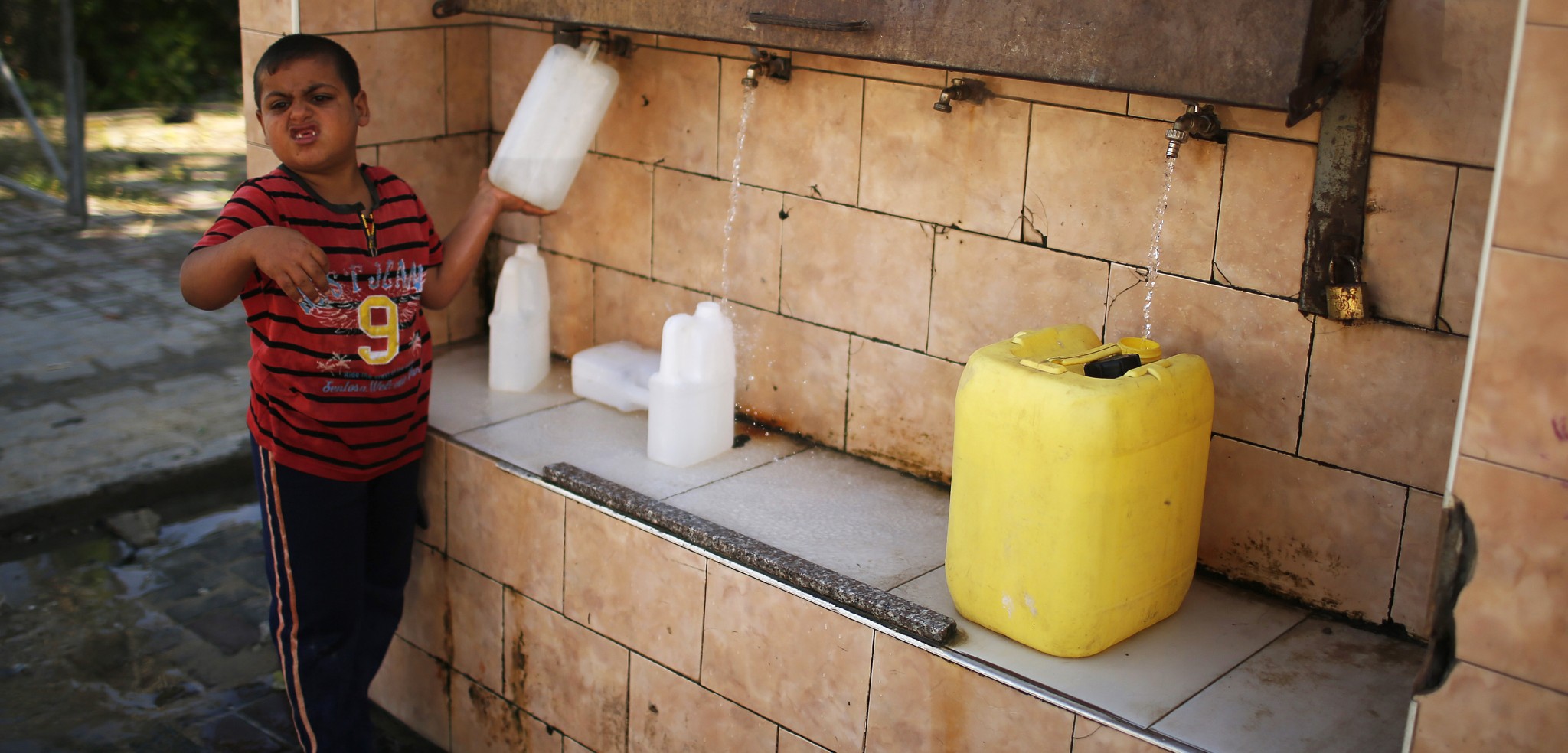Water Wars: Seeping Saltwater is Threatening Our Drinking Water
Spurred by sea level rise and mismanagement, salty ocean water is contaminating crucial coastal freshwater.
Article body copy
In the porous rocks deep beneath the war-torn Gaza Strip a battle for territory is underway. Along the coast, the Mediterranean Sea is percolating through the sand, encroaching on an underground freshwater reserve—a salty invader poisoning the main source of drinking water for more than a million people.
Gazans are drawing too heavily from their aquifer, a mismanagement that destabilizes the balance of power between salt and fresh water. As a result, the sea is seeping inland.
Ostensibly this subterranean dispute is being fought by the forces of nature, yet as Josie Glausiusz writes in “Land Divided, Coast United,” the fate of the region’s water supply is intricately linked to the human struggles in Gaza and the jurisdictional wrangling that results.
Gazans are not the only people facing saltwater intrusion, however. It’s a global issue, and one that will likely get worse as sea levels rise.
Half of the world population relies on coastal aquifers for drinking water, says hydrogeologist Katerina Mazi. Across the planet, seawater is already encroaching, and it doesn’t take much of it to cause contamination. An addition of just two percent salt water makes fresh water undrinkable, and five percent makes the water useless for farming.
Aquifer contamination by saltwater intrusion has already driven farmland loss in Egypt, the need for costly retrofits to Florida’s canal system, and the threat of worsening water quality in Finland.
Keeping a coastal aquifer fresh depends on a delicate balance of pressures: the pressure of the water in the aquifer must counterbalance the pressure of the intruding seawater. Saltwater intrusion is a natural process, yet human activities are increasingly disrupting the balance.
When we take too much water out of a coastal aquifer, seawater can fill the void. And as anthropogenic climate change makes sea levels rise, so too will incidences of seawater intrusion. The exact extent of the damage to come is a matter of ongoing scientific debate. According to research by Mazi and her colleagues from the Navarino Environmental Observatory in Greece, there may be a tipping point at which damage will happen quickly and be difficult to reverse.
Using a mathematical representation of a coastal aquifer, Mazi shows how the relationship between seawater intrusion and sea level rise is “highly nonlinear.” As the ocean rises, the salinity of aquifers increases little by little, but at some threshold the amount of intrusion crosses a tipping point, with the aquifer quite suddenly switching from potable to contaminated.
In her hypothetical scenario, Mazi shows how an aquifer 30 meters deep with no discharge into the ocean will become salty if the sea level rises by just over half a meter. At the current rate of sea level rise—a rate that’s accelerating—the aquifer would become undrinkable in just 20 years.
“The possibility of such acceleration into full seawater intrusion is a major concern for the resilience and sustainability of coastal populations that depend on groundwater for their water supply,” says Mazi by email. Desert or semi-desert regions, islands, and highly-populous areas with high water demands are particularly vulnerable.
There are ways of staving off intrusion. In 1951, the Los Angeles County Flood Control District implemented a fix. By pumping water into a well situated between an aquifer and the sea, they created an underground wall of high-pressure water that prevents saltwater from pushing landward. But the fix comes at a cost.
Today, California spends some $5 million a year maintaining these high-pressure water walls in just one region. More than just the financial cost, this strategy requires water to work, the very resource that is becoming more precious by the day. Given that it’s the overuse of fresh water that’s allowing the sea to seep in in the first place, it’s not exactly an ideal solution.
In Gaza and elsewhere, preventing the contamination of crucial coastal aquifers is a complex problem—and with the sea level rising, it’s not getting any easier.

